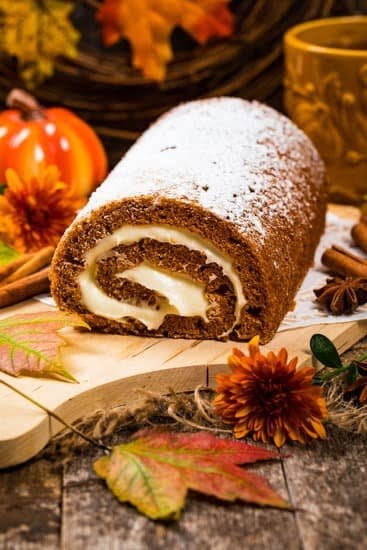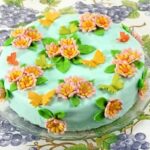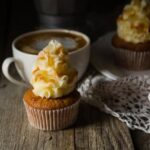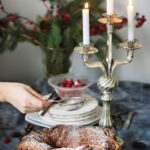Buttercream icing is a versatile and popular choice for cake decorating, whether you’re a beginner or a professional. In this article, we will explore the beauty of buttercream icing and why it is preferred by so many.
We will also provide step-by-step instructions on how to make the perfect buttercream icing from scratch, as well as tips and techniques for achieving different decoration styles. So let’s dive in and discover the art of decorating cakes with buttercream icing.
Buttercream icing has gained immense popularity in the world of cake decorating due to its smooth texture, creamy flavor, and ability to hold intricate designs. It not only adds a delectable taste to the cake but also serves as an edible work of art. Whether you’re looking to create elegant floral patterns or whimsical piped designs, buttercream icing is your go-to medium.
One of the reasons why buttercream icing is favored by both beginners and professionals is its forgiving nature. Unlike fondant, which requires precise measurements and meticulous rolling techniques, buttercream can be easily manipulated and corrected if mistakes are made. It allows decorators to experiment with various techniques without fear of ruining their creation.
With that said, let’s delve into the world of buttercream cake decorating. From gathering your supplies to creating stunning designs, we’ll provide you with all the information you need to embark on your own buttercream masterpiece. So grab your spatula and piping bags as we take you on a journey through the beauty of buttercream icing.
Gathering Your Supplies
To successfully decorate a cake with buttercream icing, it is essential to gather all the necessary supplies. Having the right tools and ingredients at hand will not only make the decorating process smoother but also ensure professional-looking results. Here is a detailed list of everything you’ll need:
Tools
- Offset spatula: Ideal for spreading and smoothing buttercream on the cake’s surface.
- Piping bags: Used for creating decorative designs using different tips.
- Decorating tips: Assorted tips in various shapes and sizes for different techniques like borders, rosettes, and writing.
- Couplers: Allow you to easily switch between different tips without changing piping bags.
- Cake smoother: Helps achieve a smooth finish on the buttercream surface.
- Bench scraper or palette knife: Useful for achieving clean edges and removing excess buttercream.
- Turntable: A rotating platform makes it easier to evenly apply buttercream around the cake.
Ingredients
- Unsalted butter: The base of traditional buttercream icing, providing texture and flavor.
- Confectioners’ sugar: Sweetens and thickens the icing while giving it a smooth consistency.
- Clear vanilla extract or other flavorings: Adds flavor to the buttercream; can be replaced with other extracts like almond or lemon as desired.
- Milk or heavy cream (optional): Used to adjust the thickness of the icing according to your preferences.
When gathering your supplies, it is important to choose high-quality products for better results. Look for reputable brands known for their durability and performance. Additionally, consider purchasing food coloring gels specifically designed for icing, as they offer vibrant colors without altering the consistency of the buttercream.
You can find these supplies at specialty baking stores, craft stores with baking sections, or online retailers. Shopping online can provide access to a wider range of options and competitive pricing. Be sure to check customer reviews before making a purchase to ensure you are getting the best products for your cake decorating journey.
Preparing the Perfect Buttercream Icing
Buttercream icing is not only delicious, but it is also a versatile and popular choice for cake decorating. Whether you are a beginner or a professional, knowing how to make the perfect buttercream icing is essential for creating beautiful and impressive cake designs. In this section, we will provide step-by-step instructions on how to make buttercream icing from scratch, techniques to achieve the desired consistency, and insights into flavor variations and coloring options.
To prepare the perfect buttercream icing, you will need the following ingredients:
- Unsalted butter: It is important to use unsalted butter as it allows you to control the amount of salt in your icing.
- Powdered sugar: Also known as confectioners’ sugar, powdered sugar gives sweetness and stability to the buttercream.
- Vanilla extract: This adds flavor to the icing and complements a wide range of cake flavors.
- Heavy cream or milk: Either heavy cream or milk can be used to thin out the icing and reach the desired consistency.
- Optional flavorings and food coloring: Depending on your preference, you can add additional flavorings such as almond extract or lemon zest. Food coloring can also be used to achieve vibrant colors.
| Ingredients | Ratio |
|---|---|
| Unsalted Butter (softened) | 1 cup (2 sticks) |
| Powdered Sugar | 4 cups |
| Vanilla Extract | 2 teaspoons |
| Heavy Cream (or milk) | 2-4 tablespoons |
To make the buttercream icing:
- In a large bowl, beat the softened butter with an electric mixer on medium speed until creamy and smooth.
- Gradually add the powdered sugar, one cup at a time, beating well after each addition until fully incorporated.
- Mix in the vanilla extract and continue beating until the icing is light and fluffy.
- If the icing is too thick, add heavy cream or milk, one tablespoon at a time, until reaching the desired consistency.
Once you have mastered this basic buttercream recipe, you can experiment with different flavor variations by incorporating extracts like almond or peppermint and adding food coloring to achieve vibrant or pastel shades.
Preparing the Cake for Decoration
Once you have gathered all your supplies and prepared the perfect buttercream icing, it is time to prepare the cake itself for decoration. Properly preparing the cake will ensure that your buttercream design looks flawless and professional. Here are some guidelines to follow:
- Leveling the Cake: Before you begin decorating, it is important to level your cake layers. This ensures a flat and even surface for applying the buttercream icing. You can use a cake leveler or a serrated knife to carefully remove any domed tops from each layer.
- Crumb Coating: To create a smooth base for your final buttercream design, apply a thin layer of buttercream icing all over the cake. This helps seal in any loose crumbs and provides a stable foundation for additional layers of buttercream. Use an offset spatula to spread the icing evenly on the top and sides of the cake.
- Choosing the Right Cake Flavor: Consider the flavor of your cake when selecting a design for your buttercream icing. Certain flavors pair better with specific types of decoration. For example, a light vanilla cake may be well-suited for delicate floral designs, while a rich chocolate cake may lend itself to more bold and textured patterns.
- Freezing or Chilling: If you find that your cake is crumbly or difficult to work with, consider freezing or chilling it before applying the buttercream icing. This will make it easier to handle and less prone to crumbling or falling apart during decoration.
Properly preparing your cake for decoration lays the foundation for beautiful and professional-looking results. Take care in leveling and crumb coating the cake, choosing complimentary flavors, and adjusting its temperature as necessary.
| Cake Flavor | Recommended Buttercream Decoration Style |
|---|---|
| Vanilla | Delicate floral designs, piped borders |
| Chocolate | Bold and textured patterns, rosettes |
| Red Velvet | Ruffled and draped designs, buttercream transfers |
| Lemon | Lattice patterns, lemon zest decorations |
Essential Buttercream Techniques
Piping
One of the essential buttercream techniques that every cake decorator should master is piping. Piping involves using a piping bag and various tips to create intricate designs and patterns on the cake’s surface. To begin, select the desired tip size based on the design you want to achieve. For fine details, like writing or delicate borders, a smaller round tip is recommended, while larger star or petal tips are better for creating flowers or rosettes.
To pipe with buttercream icing, start by filling a piping bag fitted with your chosen tip. Twist the top of the bag to secure it and apply gentle pressure as you pipe onto the cake. Practice applying consistent pressure to achieve straight lines or smooth swirls. Experiment with different motions and angles to create different effects.
Rosettes
Rosettes are a popular buttercream technique that adds elegance to any cake design. To make rosettes, start by holding your piping bag perpendicular to the cake’s surface with the wide end of the tip touching the cake. Apply steady pressure while moving your hand in a circular motion, creating a tight spiral shape that builds outward into a beautiful rosette.
For variety, try varying the size of your rosettes by adjusting the pressure applied or using different-sized tips. You can also add leaves in between each rosette for an added touch of realism.
Borders
Another key buttercream technique that can elevate your cake decoration is creating borders. Borders act as frames for your cake and provide a polished finish. There are several types of borders you can incorporate into your designs, such as shell borders, rope borders, or bead borders.
To create a shell border, use a round or star-shaped tip and apply gentle pressure while moving the piping bag in an undulating motion along the edge of your cake. For rope borders, use a small round tip and pipe a continuous rope-like shape around the cake. Bead borders can be achieved by using a small round tip and piping small dots in a row.
Remember to practice these techniques on parchment paper or a practice board before attempting them on your cake. This will help you refine your skills and gain confidence in your piping abilities.
By mastering these essential buttercream techniques like piping, rosettes, and borders, you can create stunning designs that will impress both yourself and others. With practice and creativity, the possibilities for unique buttercream decorations are endless.
Creating Beautiful Buttercream Designs
Inspiring Ideas for Buttercream Designs
When it comes to creating beautiful buttercream designs, the possibilities are endless. Whether you want to make elegant floral patterns or fun and whimsical textures, there are various techniques that can help you achieve stunning results. One popular design is creating buttercream flowers, where you can make delicate roses, daisies, or even intricate succulents.
Another option is to experiment with ruffles, which can add a touch of elegance and movement to your cake. Textured patterns are also a great way to create visual interest and depth in your design.
Step-by-Step Instructions for Buttercream Designs
To begin creating your buttercream designs, it’s important to have the right tools on hand. Piping bags and tips are essential for achieving precise details and shapes. For flowers, a petal tip and leaf tip are commonly used, while ruffles can be created with a special ruffle tip. Once you have your tools ready, follow these step-by-step instructions:
- Start by piping a base layer of buttercream onto your cake using a small round tip.
- For flowers, begin with the center and pipe small dots in a circular pattern.
- Gradually add layers of petals around the center dots, using different shades or colors if desired.
- Use a leaf tip to add leaves or other foliage around the flowers.
- For ruffles, hold your piping bag at a slight angle and apply gentle pressure as you move the bag back and forth in quick motions.
- To create textured patterns, experiment with different tips such as star tips or grass tips.
Tips for Combining Techniques
Creating beautiful buttercream designs often involves combining multiple techniques to achieve unique and eye-catching results. For example, you can incorporate flowers into a ruffled design by piping small blossoms at the base of the ruffles. Another idea is to create a textured background and then add a focal point by piping a large flower or other intricate design on top.
Don’t be afraid to experiment with different combinations and see what works best for your vision. Remember, practice makes perfect, so keep trying different ideas until you find the perfect combination that suits your style.
By following these tips and techniques, you can create beautiful buttercream designs that will wow your friends and family. Remember to have fun, embrace your creativity, and don’t be afraid to try new things. With practice and patience, you’ll soon become a master at decorating cakes with buttercream icing.
Adding Final Touches and Embellishments
Once you have mastered the essential buttercream techniques and created a beautiful design on your cake, it’s time to add those final touches and embellishments that will truly make your creation stand out. Adding additional decorations can take your buttercream design to the next level and enhance its visual appeal. Here are some suggestions for adding those finishing touches:
- Edible flowers: Use fresh or edible flowers to create a stunning floral arrangement on top of your cake. Make sure the flowers are safe for consumption and free from any chemicals or pesticides.
- Sprinkles: Sprinkles are a simple yet effective way to add color and texture to your buttercream design. Choose from a wide variety of sprinkle shapes, sizes, and colors to match your theme or create a playful look.
- Fondant accents: Fondant accents can be used to create intricate details and designs on your buttercream cake. Roll out fondant in various colors, cut out shapes using cookie cutters or molds, and carefully place them on your cake.
To achieve a smooth finish on your cake’s surface, you can use a cake smoother or an offset spatula. Gently glide the smoother or spatula along the sides and top of the cake to even out any imperfections and create a polished look.
Remember that transporting and storing a decorated buttercream cake requires special care. Place the cake in a sturdy box with supportive inserts to prevent any movement during transportation. Keep the cake in a cool environment away from direct sunlight until it is ready to be served.
Troubleshooting Tips
In case you encounter any issues while adding final touches and embellishments, here are some troubleshooting tips:
- If your sprinkles are not sticking well to the buttercream, lightly mist the cake with water or brush it with a thin layer of simple syrup before applying the sprinkles.
- If you find that your fondant accents are not sticking to the cake, use a small amount of piping gel or edible glue on the back of the fondant pieces to adhere them securely.
- To achieve a perfectly smooth finish on your cake, ensure that your buttercream is at the right consistency. If it is too soft and causing bulges or ridges, refrigerate the cake for a short time to firm up the buttercream before continuing with smoothing.
Feel free to let your creativity soar when adding final touches and embellishments to your buttercream masterpiece. Experiment with different decorations and techniques to create a truly unique and stunning finished product. Don’t forget to take photos of your creations and share them on social media using the hashtag #ButtercreamMasterpiece.
Troubleshooting and Frequently Asked Questions
When it comes to decorating a cake with buttercream icing, there may be some challenges along the way. However, with the right knowledge and troubleshooting techniques, you can overcome these issues and achieve beautiful results. This section will address common problems encountered during buttercream cake decoration and provide solutions to resolve them.
One common issue that decorators face is air bubbles in their buttercream icing. These air bubbles can result in an uneven and bumpy texture on the cake’s surface. To prevent this, ensure that your buttercream is properly mixed by using a paddle attachment on a stand mixer instead of a whisk attachment. Additionally, gently tapping the filled piping bag against a hard surface before piping can help release any trapped air.
Another challenge is achieving smooth edges on your cake after applying the buttercream icing. If you find that your edges are jagged or uneven, try using an offset spatula to smooth out the edges by holding it vertically against the side of the cake while rotating it slowly. You can also dip the spatula in hot water, wipe it dry, and then use it to smooth out any imperfections.
A frequently asked question among beginners is how to prevent their buttercream from melting or becoming too soft while working on intricate designs. One solution is to refrigerate or freeze your decorated cake at various intervals throughout the process. This will help firm up the buttercream and make it easier to work with. Additionally, keeping your workspace cool and avoiding direct sunlight or a warm environment will also help maintain the stability of the buttercream.
It’s important to note that practice is key when it comes to troubleshooting and improving your buttercream decorating skills. Don’t be discouraged if you encounter difficulties along the way – even professional decorators face challenges from time to time. With patience and perseverance, you can conquer any hurdles that come your way and create stunning masterpieces with buttercream icing.
Now that we have covered some common troubleshooting tips and frequently asked questions, you are well-equipped to tackle any issues that may arise during your buttercream cake decorating journey. Remember, every mistake or challenge is an opportunity to learn and grow as a decorator. So, don’t be afraid to experiment, embrace creativity, and most importantly, have fun with your buttercream creations.
Conclusion
In conclusion, mastering the art of buttercream cake decoration allows you to showcase your creativity and create stunning masterpieces. Throughout this article, we have covered everything from gathering supplies to troubleshooting common issues. By following our step-by-step instructions and practicing different techniques, you can improve your skills and achieve professional-looking results.
The beauty of buttercream icing lies in its versatility and popularity among both beginners and professionals. It serves as a blank canvas for your imagination to run wild, with endless possibilities for designs and flavors. Whether you are decorating a birthday cake, wedding cake, or any special occasion cake, buttercream icing is an excellent choice.
As you embark on your buttercream decorating journey, don’t be afraid to experiment. Embrace the joy in creating something beautiful and unique. With practice comes improvement, so don’t get discouraged if your first attempts aren’t perfect. Remember that every professional started as a beginner.
We invite you to share photos of your own buttercream creations on social media. Don’t hesitate to show off your masterpiece and inspire others with your creativity. Join the community of passionate bakers who enjoy the satisfying process of turning a simple cake into a work of art.
So gather your supplies, prepare the perfect buttercream icing, practice essential techniques, create beautiful designs, add final touches and embellishments, troubleshoot along the way, and most importantly-have fun. Let the beauty of buttercream icing take center stage as you showcase your talent through delicious cakes that will bring joy to any celebration.
Frequently Asked Questions
How do you ice a cake with buttercream for beginners?
To ice a cake with buttercream for beginners, start by preparing your cake layers and ensuring they are completely cooled. Next, make a batch of buttercream frosting by creaming together softened butter and powdered sugar until light and fluffy. If desired, you can add flavorings such as vanilla extract or chocolate powder to the frosting. Once your frosting is ready, place one cake layer on a turntable or flat surface and evenly spread a thin layer of buttercream on top using an offset spatula. Add the second cake layer on top and continue to frost the entire cake with a thin layer of buttercream called a crumb coat.
This will help seal in any loose crumbs and create a smooth base for the final coat. Refrigerate the cake for about 20 minutes to firm up before applying the final coat of buttercream. Using more frosting this time, apply it generously all over the chilled crumb-coated cake, starting from the top and working your way down to the sides using long strokes. Smooth out any imperfections with an offset spatula or bench scraper, adding more frosting where needed until you achieve an even coating. Finally, you can decorate your iced cake further with piping designs, sprinkles, or other decorations.
Can you decorate a cake with buttercream frosting?
Yes, you can definitely decorate a cake with buttercream frosting! Buttercream is a versatile frosting that can be easily manipulated to create various decorative designs on cakes. Once you have iced your cake with a smooth layer of buttercream, you can use different piping tips to create beautiful borders or intricate patterns on the sides of the cake. For example, you can use a star tip to create rosettes or shells along the edges or employ petal tips to pipe flowers directly onto the surface of the cake.
Additionally, you can use small round tips for writing names or messages on cakes or filling in areas with dots or lines for added detail. Buttercream also serves as a great base to attach other decorative elements like fondant accents, edible decorations, or fresh flowers. With a little practice and creativity, you can transform a simple cake into a stunning centerpiece using buttercream frosting.
How do you top a cake with buttercream?
Topping a cake with buttercream involves adding additional decorative elements to enhance its appearance. Once your cake is fully iced with buttercream, you have various options to top it off and make it visually appealing. One of the most common ways is to create elegant borders along the top edge of the cake using different piping tips. You can choose from basic scrolled designs to more intricate lace-like patterns, depending on your skill level and desired aesthetic.
Another option is to add piped flowers or other designs directly onto the top surface of the cake for an eye-catching focal point. If you prefer a smoother finish, you can gently press toasted coconut, sprinkles, or finely chopped nuts onto the buttercream before it sets to create texture and visual interest. Alternatively, you can use fondant decorations – like cut-out shapes or figurines – placed on top of the cake for a more sculptural effect. Adding fresh fruit or flowers as a final touch is also popular for an elegant and natural presentation that complements the flavor profile of your cake.

Welcome to our cake decorating blog! My name is Destiny Flores, and I am the proud owner of a cake decorating business named Cake Karma. Our mission is to provide delicious, beautiful cakes for all occasions. We specialize in creating custom cakes that are tailored specifically to each customer’s individual needs and tastes.





